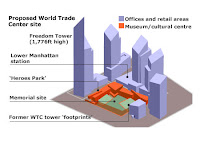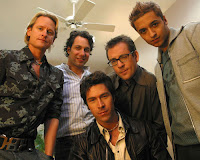 This holiday season we once again take a look at three of the hottest gift picks on our wish lists. Take gander before heading out to the mall (twice if you're shopping for any of us):
This holiday season we once again take a look at three of the hottest gift picks on our wish lists. Take gander before heading out to the mall (twice if you're shopping for any of us):Patrick Greer – DVD Camcorder
I think most of my generation has fond memories of dad pulling out his camcorder to make a family video of us at 7 o’clock Christmas morning. I tore through presents not worried about how this footage would be used against me in the future. It is these memories that are brought to mind when I look at the current line of DVD camcorders – and how I will have this kind of superior technology to use against my children...
Current DVD camcorders can hold up to 4.7 GB of information – 30 minutes to 2 hours of footage, depending on image and sound quality. This is not the reason for my current desire, though. It is the ease of transfer to my computer while still in the original DVD format. Camcorder-recorded DVDs come with all the features that we love and expect from finished DVD movies: Instant scene selection and, most importantly, higher image and sound quality. I can’t wait till I find one of these in my stocking – albeit in 3 to 4 years when the price comes down to a rational level – but I will be looking forward to it nonetheless.
J.D. Jordan - Roomba Robotic Floor Vac
It is distinctly possible that I am getting far too domestic in my old age – or it might just be that I have no love for my upright vacuum cleaner or the endless pursuit of dog hair detritus scatted across my hardwoods. Regardless, iRobot, a commercial robotics company founded by MIT ex-pats, has answered my prayers. They've developed Roomba, hopefully the first in a long series of robot slaves!
Roomba is a self-operated robot vacuum cleaner that, according to independent testing, cleans better than uprights costing twice as much, cleans more of your floor (especially under beds and other conventionally inaccessible areas), is easier to use and adjust than leading uprights, and (for gravy's sake) is quieter than traditional vacuums. Onboard guidance leads the Roomba to cover every surface of the room and prevents it from falling down stairs or crossing digital barriers (provided with the vacuum). The three Roomba models cost between $200 and $250 and come with a variety of accessories. But what isn't calculated into these prices is the best feature of all: You won't have to vacuum ever again. Just kick on the little robot and leave for work. By the time you get home, Roomba will have cleaned house and turned itself off. Now if only that toilet cleaning robot was ready for the market, my life could be complete...
Fleming Patterson - Laks Memory Watch
Remember when you thought having a calculator on your watch was unheard of? Well now you can still look classic while hiding away a hard drive of personal files, pictures, passwords, mp3 sounds, and even movie clips on your wrist. Paris Hilton “watch” out. Laks has introduced the Memory watch.
Just when you thought you were safe to strap on that wristband. Laks designed a watch with an integrated USB-plug in strap and a rewritable memory chip from Toshiba. The classically designed watch comes in several styles and cleverly hides the USB-plug that can be easily plugged into your computer. It's even water resistant.
The watches come in four different versions, ranging from 32MB to 256MB of storage.The prices range from $42 to $165, depending on drive size and style. It may not have a calculator, but this watch can now become the next briefcase handcuffed to you wrist. The watch is even password protected to protect you against file theft. fb































